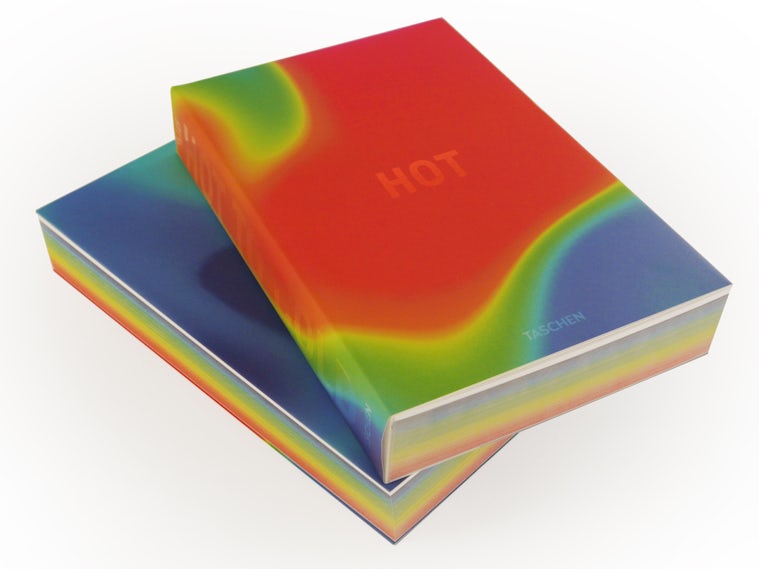“In this age of possibility, we can ask more from our buildings than ever before.”
This is the thesis of Marc Kushner’s new book, The Future of Architecture in 100 Buildings, released yesterday, concurrently with his TED Talk. Published by Simon & Schuster, the compact book covers 100 different structures are designed to be more than just a shelter.
On one hand, the future of architecture involves classical architectural design and beauty such as Neoclassical pillars, but it also more interestingly includes approaches and elements that are not usually considered in the design process or typically aesthetically pleasing. What lies ahead are structures with repurposed sewage-pipe nooks (for dining in, no less) and sculptural wastewater treatment centers.
With that in mind, here is a collection of projects from The Future of Architecture in 100 Buildings that have unconventional (and sometimes gross) origins — and which the architects have transformed into unexpectedly exquisite structures. (In keeping with the format of the book, we’ve included Marc’s rhetorical prompts for these projects.)

© Ennead Architects

© Ennead Architects
Newtown Creek Wastewater Treatment Plant by Ennead Architects
“Can ugly be pretty?”
Newton Creek is the largest and now the most attractive of 14 treatment plants in New York City. With a $4.5 billion budget, the treatment plant goes above and beyond the usual industrial aesthetic of utilitarian design. The renovation was set to address the environmentally unsound and out-of-date facility with a design that is sensitive to the surrounding residential area. Architects, lighting artists, and an environmental sculptor collaborated to a create striking complete complex that highlights form, material, and color.

Prahran Hotel by Techne Architects
“Would you eat dinner in a sewer pipe?”
While you’re eating at this Melbourne-based hotel, it’s probably best you don’t mull of that fact that it is made of stacked precast concrete pipes that are normally used as the home for sewage waste water. This disruptive and whimsical approach creates a sculptural space with intimate cubbyhole hideouts — a sure-to-be favorite of any voyeur.


New Training Center Campus & Temporary Dormitories by a.gor.a architects
“Can mud keep us safe?”
Mao Te Clinic provides free medical treatment, shelter, and food to more than 3,000 children. The humanitarian organization is located a few miles from the Burmese border, so the clinic needed to expand to be able to take in the increasing numbers. This building was built by the growing community with mud bricks (adobe) and local wood, which are traditional weather and fire proof materials that have been used for centuries in building conuctrustion in Thailand. The mud stronghold is now the center for the health education-based social fabric of the border town.


Smith Creek Park by design/buildLAB
“Would you let your kids play in a wasteland?”
This park was once a brownfield, or post-industrial wasteland. Before this amphitheater arose like a wave from a wooden boardwalk, it was an uninspiring space in the economically strained town of Clifton Forge, Virginia. This new public space injected a renewed sense of community, rooted in nature instead of industrial rack and ruin.


+POOL by Family + Playlab, Inc.
“Can you swim in poop?”
New York City’s tap water may be the best but there’s a reason it’s not known for its beaches, and you certainly wouldn’t want to swim in the surrounding rivers. The sewage is emptied directly into the water surrounding the city every time it rains. Thanks the first crowd-funded water-filtering, floating pool, thats all going to change. This plus-shaped pool is capable of filtering up to half a million gallons of water a day, making the river cleaner and acting as the agent to reconnect the citizens of New York to the urban waterfront.


© Roland Halbe
The Truffle by Ensamble Studio
“What if a cow built your house?”
This cleverly named performance-based structure was created by a group of architects who dug a hole, crammed in hay, and poured concrete around it to finally be hollowed out by a hungry calf named Paulina. In a years time, all that was left was the imprints and markings from the unconventional design process. It became a very homely, yet charming place to watch the Spanish sunset. But, mostly importantly it embodies the characteristics that are important int he future of architecture: forward-thinking, environmentalism, and a sense of humor.
Looking for more architectural inspiration? You can watch the TEd Talk here and get a copy of The Future of Architecture in 100 Buildings here.









